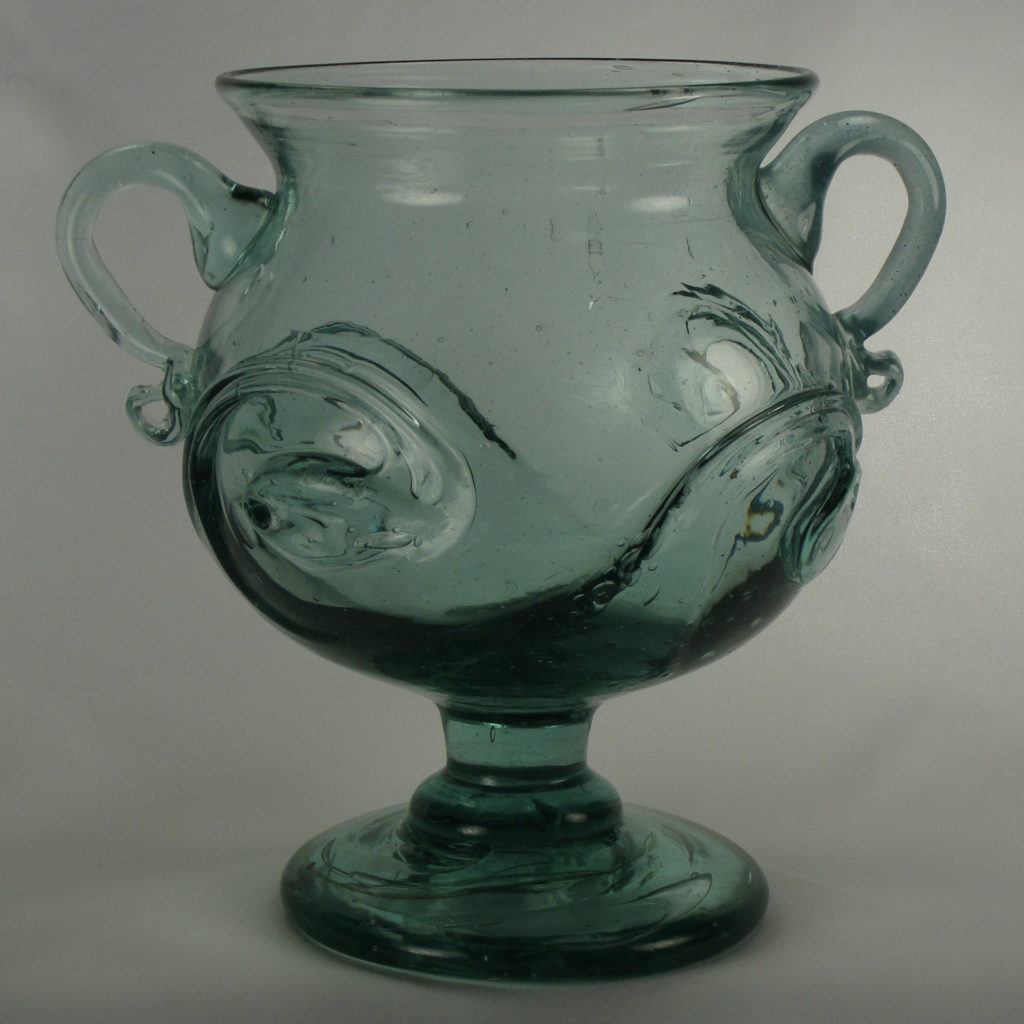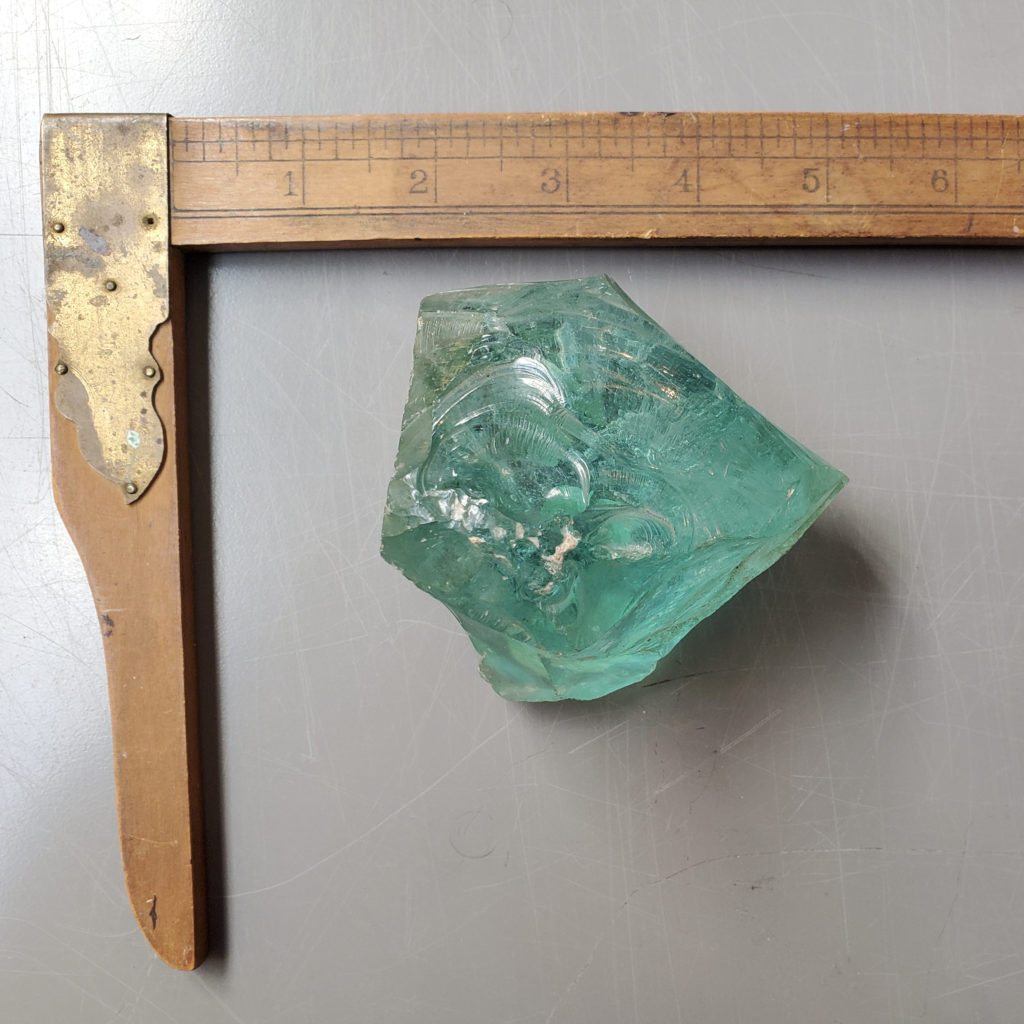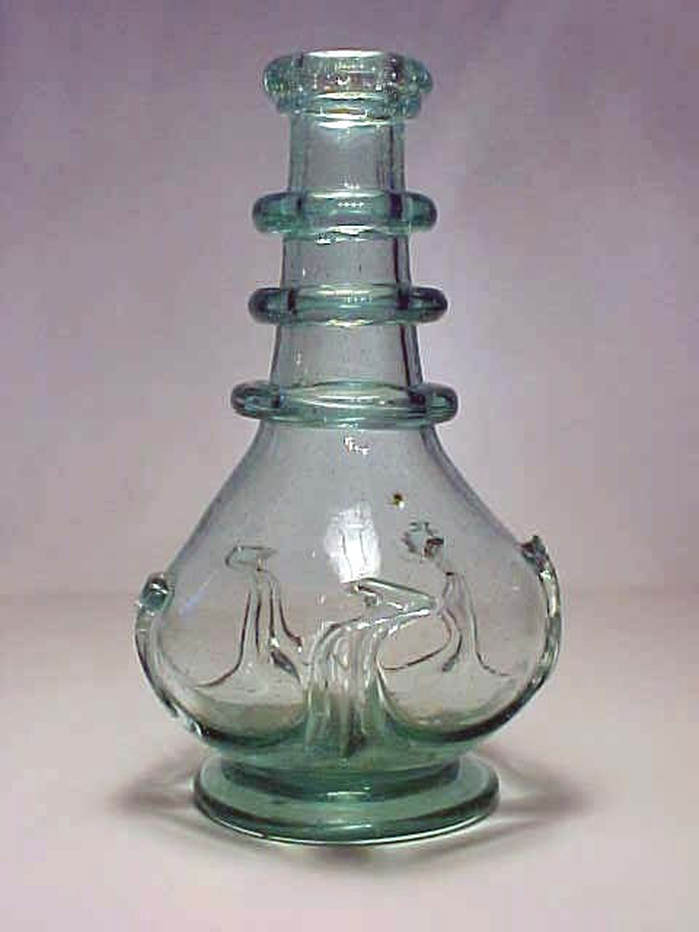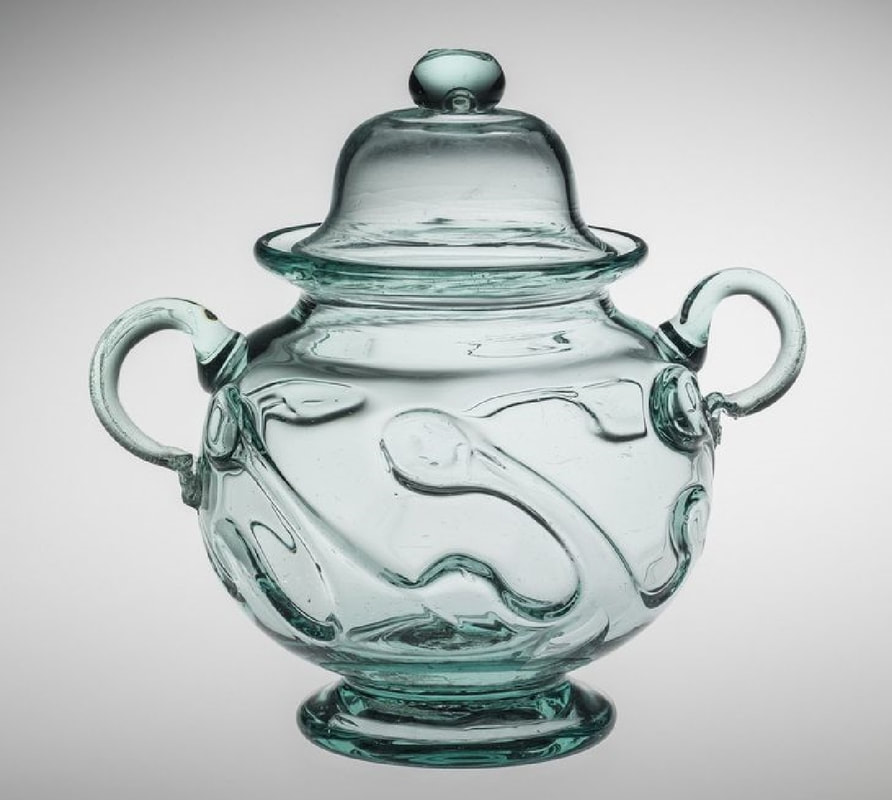“Due To Irregular Habits,” An All-Too-Short Story of the Harrisburg Glass Factory
Matt Johnson, John Rice and Early American Aquamarine Lilypad Glassware
This is a tale of the rise and demise of the Harrisburg Glass Factory. We offer it up because every time its existence is mentioned, most folks profess surprise that the small town of Harrisburg ever had such an enterprise. But it’s true: there once was a small glassworks east of the Cobb Rd. and just off the Widener Rd. – in the midst of today’s windmill county, on what was the old John Rice farm – and it produced some of the most beautiful early American aquamarine Lilypad glassware one can imagine.
The enterprise did not last long, beginning in 1841 and ending a year or two later due to the “irregular habits” (an 1800s euphemism for alcoholism) of the business’s master glassblower, Irishman Matt Johnson. What little is known of the short-lived operation, however, provides a colorful story:
In 1841, John Rice, a Harrisburg landowner living on the Widener Rd., made the acquaintance of Matt Johnson, a young talented glassblower from Ireland who had come to Boston in the early 1830s. Not much is documented of Johnson’s formative experiences in Beantown, but he apparently worked at the Boston Glass Manufactory, where he met master glassman John Foster. Foster would go on to oversee various glass factories in Vermont and New York, before finally setting up his own newly formed glass factory in Redwood in Jefferson County in 1833. And Johnson, in turn, would follow Forster to the wilds of Upstate New York, joining his new Redwood operation in 1834 with several other glass blowers.
While the Redwood factory was constructed to make window glass, it’s probably best remembered for the fancy and rare decorative pieces (bowls, paperweights, canes and the like) that were made by Johnson and the other glass workers in their spare time – pieces that typically had an aquamarine tint due to their original formula for mixing the ingredients. Yet Johnson, whose skills and creativity were undeniable, had begun to develop a bit of a problem with “the wine-cup,” as historian Franklin B. Hough would say, and his drinking would ultimately lead to his departure.
By 1839, hearing rumors that a 20-year old Canadian entrepreneur, Amasa Mallory, was keen to finance a new glass operation in Mallorytown, Ontario, Johnson headed there to become the first (and ultimately only) glassblower for the new Canadian glass works. And while the Mallorytown factory soon began to generate small amounts of Johnson’s aquamarine tableware, bottles and whimsies, its operations did not last more than a year or two. Stated reason for its closure: “Matt kept showing up for work in an inebriated state or just didn’t show up at all, and finally Amasa Mallory decided he’d had enough.”
Enter Harrisburg and John Rice. While no one quite knows how their introduction came about, Rice’s granddaughter, Mrs. Della Curtis, would some years later write the following:
“In the year of 1841 my grandfather, John Rice, who lived in Harrisburg (Cobb District), became acquainted with a man by the name of Johnson, a skilled glass blower by trade. They agreed to start a glass factory, Mr. Rice to furnish the capital, Mr. Johnson to do the work. Early that fall Mr. Rice built a log factory a short distance west of his home. A brick oven was constructed in the glass house. The sand was drawn from Dexter, a distance of about 30 miles. Mr. Rice took Mr. Johnson and his family, consisting of his wife and two children, into his home and boarded them, as he did also one, and sometimes two, hired to work in the factory.”
And so it began. Johnson was left to create glassware for sale as he saw fit, blowing the pieces he loved: pitchers, sugar bowls, jugs, sauce dishes, and similar tableware. These were of the bluish aquamarine color he had become known for, often resplendent with Lilypads and other decorative flourishes. Occasionally, he would place a three-cent piece in the knobs of some of his sugar bowls.

All of this glassware was made for local sale, and a good share of it was easily disposed of by Mr. Rice in his travels to Watertown, Dexter and Lowville. And, as Johnson’s work quickly developed a growing reputation, many a visitor made their way to the Widener Rd. factory to purchase his glassware directly. But then, once again “due to irregular habits” of the master glassblower, fortunes began to change. As Mrs. Curtis would later say:
“It was a paying project at first but in a short time Johnson would make an excuse that the blowpipes or other tools needed fixing in a nearby blacksmith shop and would wind up in a hotel near the shop where he would become intoxicated, leaving glass material that had been placed in the oven to burn. [Rice would return] with materials for the works and provisions for both families expecting to find quantities of glass ready for market only to find Johnson had been on a spree and the glass in the ovens ruined.”
As financial loses increasingly began to mount, Rice would threaten to close the operation, Mrs. Rice would plead that Johnson be given another chance for the sake of his wife and children, and Johnson would promise to do better. And with each reprieve, Johnson would briefly perform better, only to later slip away to some local watering hole, where he’d pay for his liquor with pieces of glass. You can guess the rest of the story: after several such trials, Rice ultimately gave Johnson the boot and the days of the Harrisburg Glass Factory came to an end.
Unfortunately, the exact location of the factory remains a mystery – if it could be located, suffice it to say that the Lewis County Historical Society would endeavor to undertake an analysis of any remains. And its glassware gets harder and harder to find – most is in the hands of collectors, but a few pieces are available for viewing at places like the Corning Museum of Glass, the Houston Museum of Fine Arts, Bayou Bend and the Adirondack Experience.
Sadly, the Lewis County Historical Society has none of Johnson’s Harrisburg glassware – which is truly unfortunate, as there ought to be some of this important glassware preserved in Lewis County for future generations to see (hint, hint, for anyone who’d like to donate a piece to the Historical Society).
Explore More Posts
Categories
- Goings On (5)
- Objects & Artifacts (2)
- People (9)
- Places (5)
- Preservation (2)
- Uncategorized (15)




